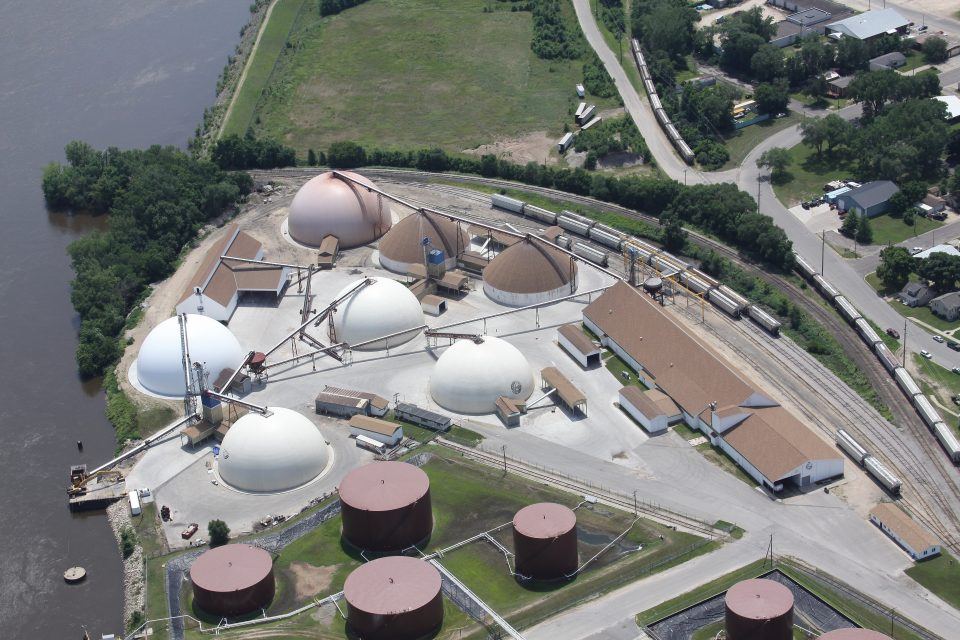For fertilizer companies in areas where construction schedules typically depend on decent weather, there’s no need for building to be delayed if a new storage dome is selected. A dome can be built any time of year, with work marching right through the calendar. This all-weather construction schedule is made possible by dome building methods. A dome is built using the shotcrete method, and much of the process is completed from the inside out.

How a dome is built
Once the foundation system is established, a ring beam or pile cap (if needed) is constructed at ground level to form the foundation for the dome structure above. The PVC airform, custom sized based on the customers’ specifications, is attached to the ring beam and inflated, forming the exterior dome shape; the high-strength fabric will remain in place indefinitely as it becomes the outer waterproofing membrane.
With the airform inflated, construction moves inside. Polyurethane foam insulation is applied to the interior of the airform, forming a layer 1 to 1.5 inches thick.
Concrete and steel reinforcement are placed on top of the foam, using the shotcrete method, and when completed, the dome is a robust reinforced concrete structure that can withstand even the most aggressive weather.
Sealed and seamless, the dome provides ideal conditions for fertilizer requiring a controlled environment. The airform surrounding the entire dome prevents water and moisture entrance. No other silo option offers this type of waterproof protection, and this exterior requires almost zero superficial maintenance. Also, the dome’s insulated nature reduces heating and cooling of the walls and air inside, preventing condensation from forming on the interior.
Corrosion protection
A concrete structure is ideal for fertilizer storage because corrosion is highly unlikely. In fact, some fertilizer domes built by Dome Technology have been around for 30 years and are still structurally sound.
Concrete may develop hairline cracks that can be penetrated by fine fertilizer dust. This concern can be mitigated by spraying a polyurea coating on the interior surface of the dome. A corrosive-resistant powder can also be mixed into the concrete when pouring the floor.
Water wreaks havoc on fertilizer, and since most fertilizers are hygroscopic, they attract moisture that dissolves the product and corrodes it too, producing weak acids that break down steel. To account for this, corrosive-resistant rebar and/or additional concrete over rebar are used.
To protect product from humidity, a dehumidifier is also highly recommended. Housed on top of the dome, humidity in the headspace can be controlled, and the ideal interior climate can be maintained. Humidity monitors can also be installed, allowing site managers to survey and adjust interior conditions.
Protection from rust and moisture on the storage side is one thing, but there are ways to extend a facility’s life span by protecting other components from corrosion too. While many fertilizer companies utilize front-end loaders, those who select integrated reclaim systems can protect metal components from rust in multiple ways. Stainless steel is always an option, especially ideal for food- or pharm-grade fertilizer products, but can be cost prohibitive. Another route is to paint the metal so corrosion isn’t an issue; the main thing to remember is to keep up on maintenance so chips and scratches in the surface don’t allow an access point for moisture.
Editor’s note: This is an excerpt from the November/December 2020 issue of World Fertilizer. For the full online edition, click here.
